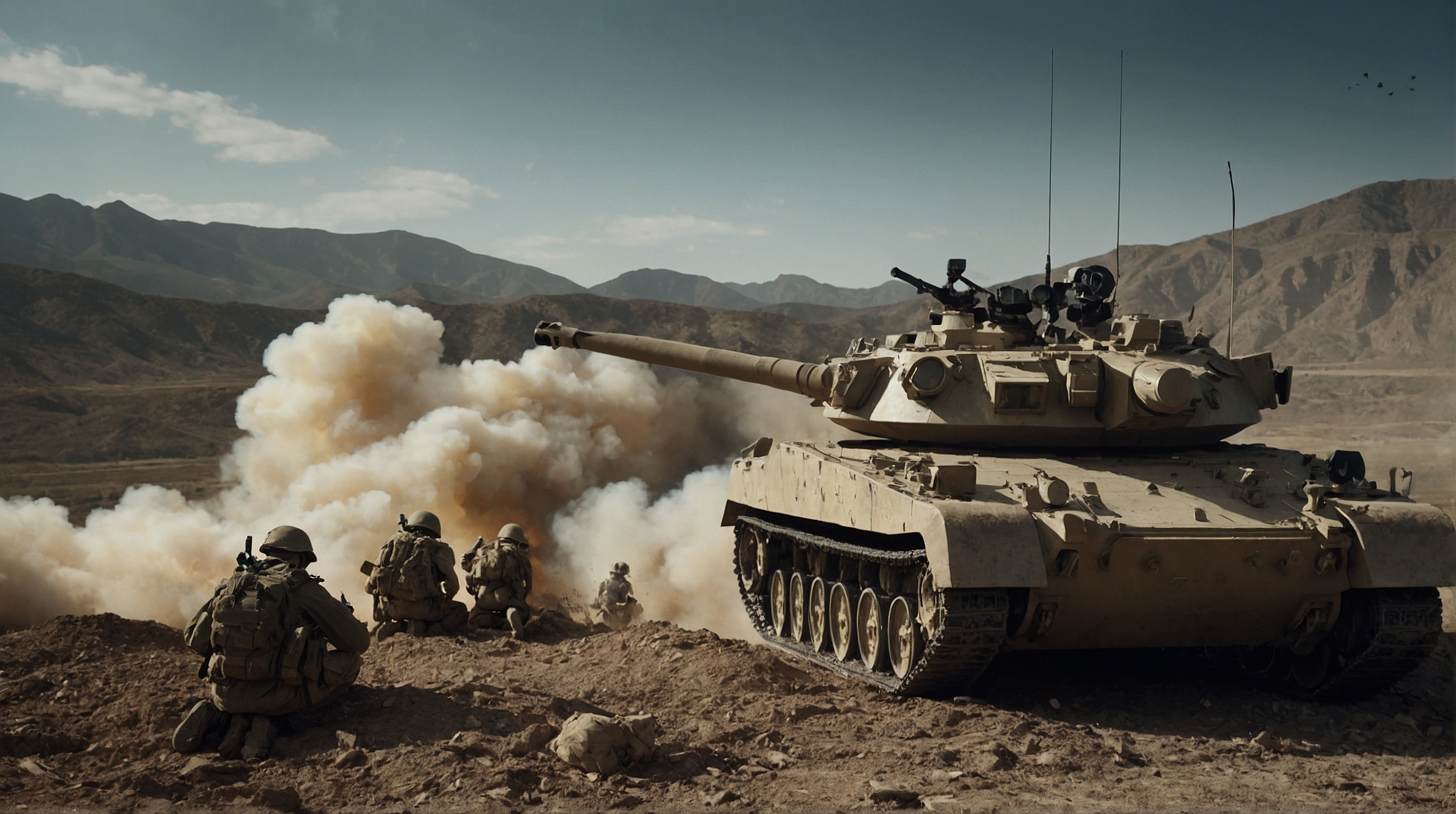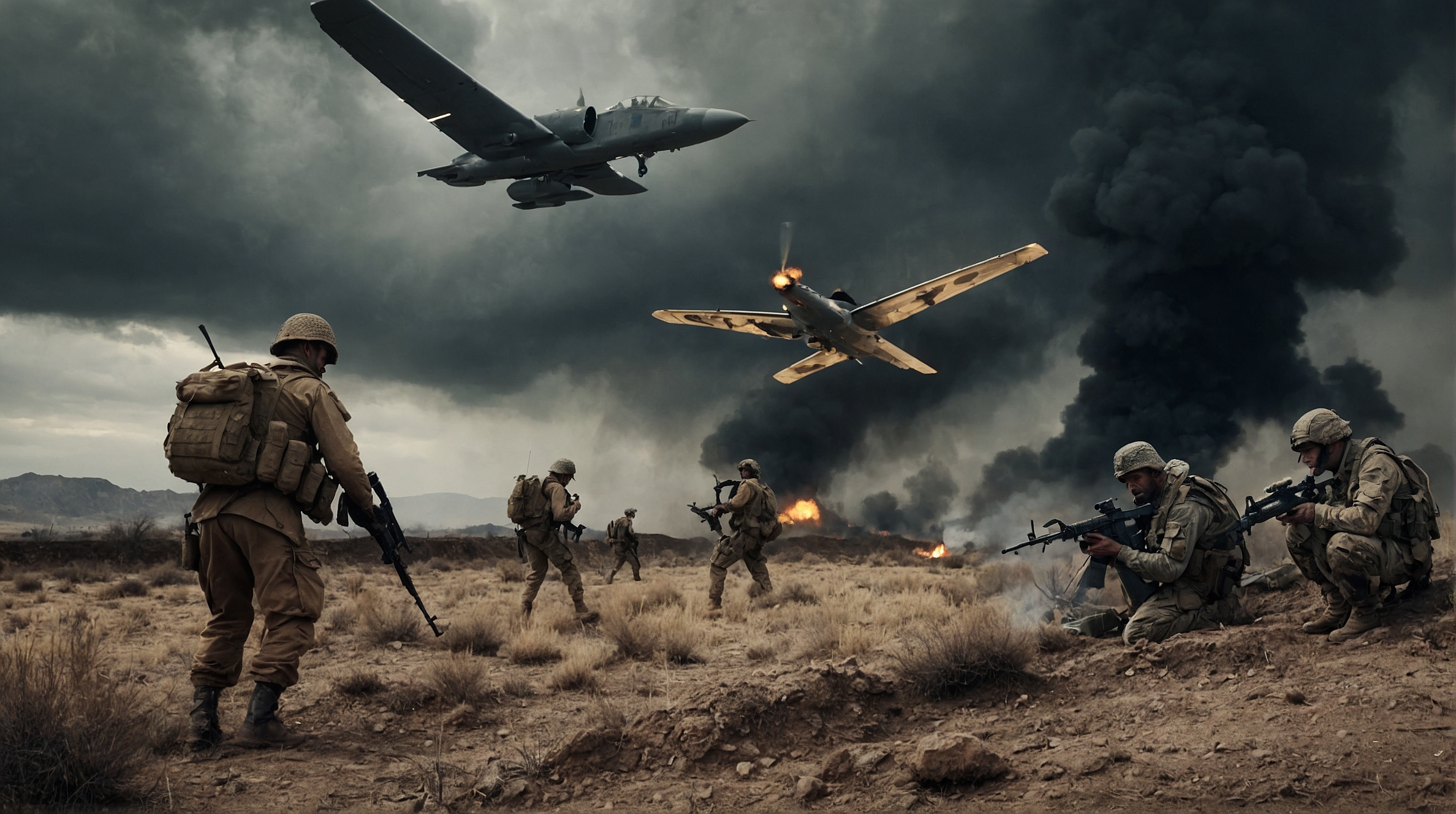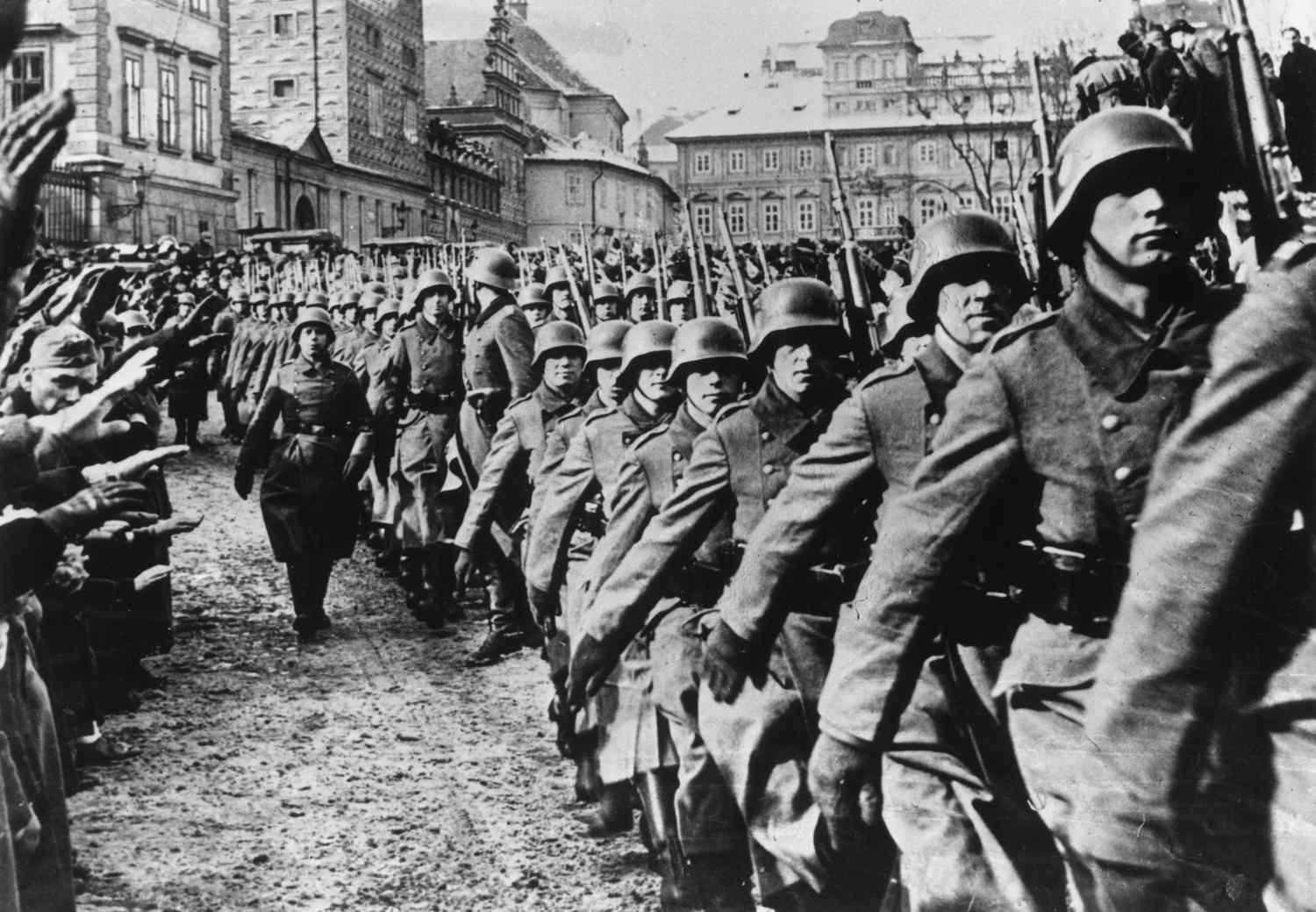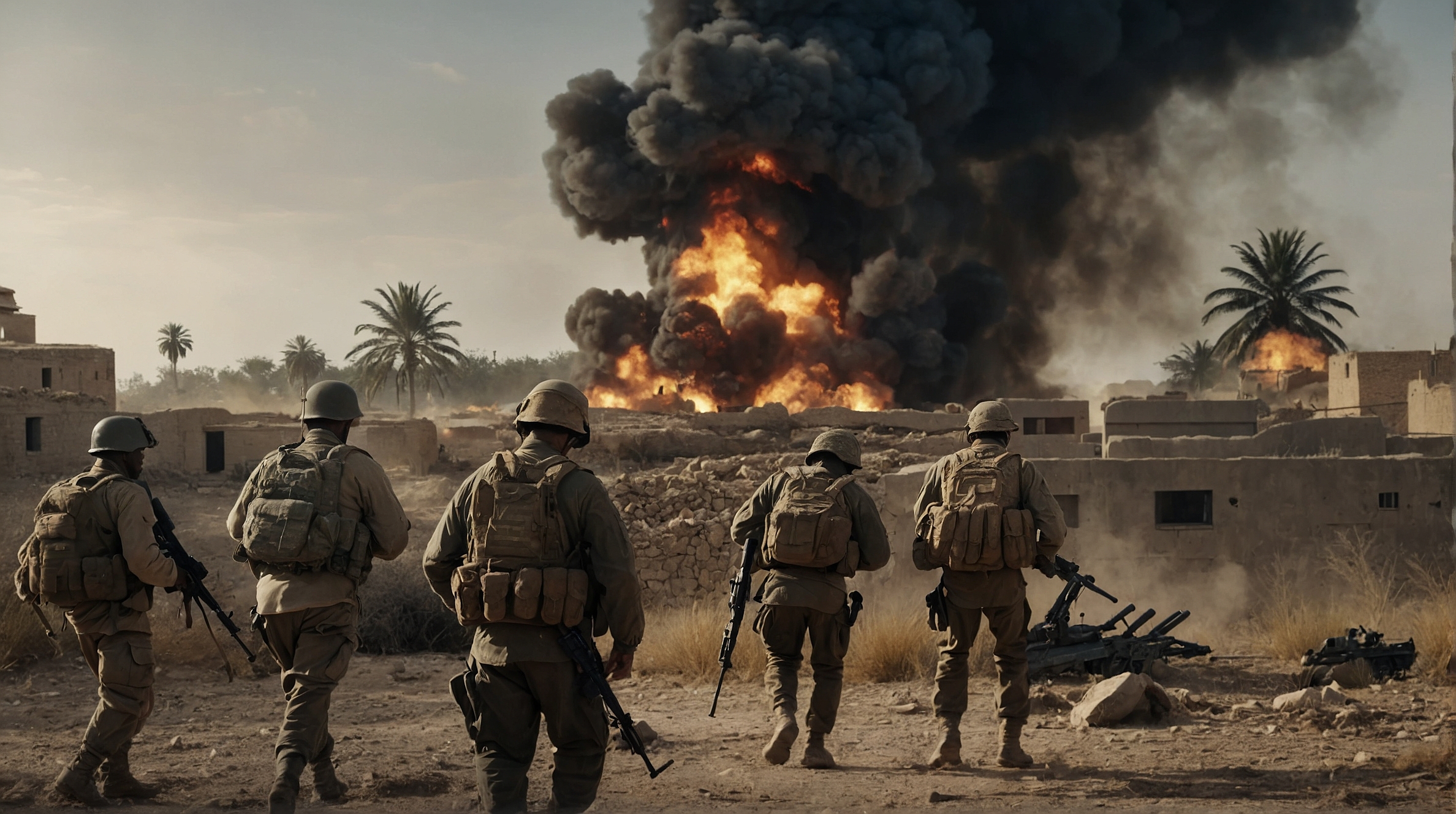Leaders In War Technology - Global Dominance Examined
War technologyencompasses the tools, machines, and methods used in warfare. It is a broad term that includes everything from simple weapons crafted from natural materials to sophisticated systems that rely on advanced science and engineering. The scope of military technology is vast, covering offensive and defensive capabilities, as well as support systems that enable armies to operate effectively.
Definition And Scope Of Military Technology
Military technology refers to the equipment and techniques designed for use in combat and defence. It includes the development, production, and application of devices and systems for warfare. This can range from the spears and shields of ancient warriors to the drones and cyber-defence systems of the modern era.
Historical Significance And Evolution
The history of war technology is as old as humanity itself. From the moment our ancestors fashioned the first weapons from stone and wood, technology has played a pivotal role in the outcome of conflicts. Over the centuries, advancements in military technology have often been driven by the need to gain a strategic advantage over adversaries. The evolution of war technology has been marked by significant milestones, such as the invention of the chariot, the crossbow, and the cannon, each changing the face of warfare in its time.
The Relationship Between Technology, Tactics, And Military Effectiveness
The effectiveness of a military forceis not determined by technology alone. Tactics—the plans and manoeuvres used in battle—also play a crucial role. The most advanced technology can be rendered useless without the proper tactics to employ it. Conversely, innovative tactics can sometimes overcome technological disadvantages. The interplay between technology and tactics is a dance of innovation and adaptation, where each influences the other in the pursuit of military dominance.
War technology has always been a key factor in the success or failure of military campaigns. It shapes the way wars are fought and often determines the victor. As we delve deeper into the various aspects of war technology, we will explore how geography and topography have influenced its development, the advancements in offensive and defensive systems, the rise of modern war technology, and what the future may hold for military innovation.
The Impact Of Geography And Topography On War Technology
War technology is not developed in a vacuum. The geography and topography of a region can significantly influence the types of military technologies that are developed and deployed. Throughout history, the physical landscape has shaped the tactics and tools of warfare, leading to the creation of unique military ecospheres.
The Concept Of Military Ecospheres
A military ecosphererefers to the environment in which military technology evolves. This includes the natural landscape, climate, available resources, and the specific challenges that these factors present. For instance, a mountainous region would encourage the development of technologies that can navigate steep terrains, while a desert landscape might lead to innovations in water conservation and heat-resistant materials.
Influence Of Physical Barriers And Military Topography
Physical barrieres such as mountains, rivers, and oceans have historically acted as natural fortifications. They can hinder or slow down the movement of troops and equipment, making it necessary for military forces to develop specialized technology to overcome these obstacles. For example, the development of bridges and pontoons allowed armies to cross rivers more effectively, while mountain warfare led to the creation of lighter and more versatile climbing equipment.
Case Studies - Mesoamerica, Japan, And The Eurasian Steppe
- Mesoamerica: The dense jungles and rugged terrain of Mesoamerica led to the development of warfare that relied heavily on ambushes and close-quarter combat. The Aztecs, for instance, used weapons like the macuahuitl, a wooden sword embedded with sharp obsidian blades, which was well-suited for the dense forest environments.
- Japan: Japan's mountainous islands and the surrounding sea shaped its war technology significantly. The Japanese developed a strong naval tradition, with ships designed for the rough waters of the Pacific. On land, the samurai adapted to the terrain with lighter armour and more versatile weapons, such as the katana, which allowed for quick movement and agility in the hilly landscapes.
- Eurasian Steppe: The vast open plains of the Eurasian Steppe were home to nomadic tribes like the Mongols, who became masters of horseback warfare. The steppe's geography necessitated the development of technologies such as the composite bow, which could be used effectively from horseback, and the stirrup, which improved a rider's stability and control.
These case studies illustrate how geography and topography have been critical in shaping the development of war technology. The challenges presented by different environments have led to a diverse array of military innovations, each tailored to the specific needs of the landscape. As we continue to examine the leaders in war technology, it becomes clear that those who can best adapt to their surroundings often gain a significant strategic advantage.
Advancements In Offensive And Defensive Systems
Warfare has always been a catalyst for technological innovation, with each advancement in offensive and defensive systems marking a new era in military history. The development of ancient weaponry, innovations in armour and fortifications, and the gunpowder revolution have each played pivotal roles in shaping the tactics and outcomes of battles throughout the centuries.
The Development Of Ancient Weaponry
The earliest tools of war were simple yet effective. Spears, bows, and arrows were among the first weapons to be used by ancient warriors. These weapons allowed soldiers to engage their enemies from a distance, increasing their safety and strategic options during combat. Over time, these basic weapons evolved into more sophisticated forms. The composite bow, for example, was a significant advancement over the simple bow, offering greater range and power due to its combination of materials like wood, horn, and sinew.
Swords and daggers also underwent a transformation. Initially made from bronze, these weapons later incorporated iron and eventually steel, which offered superior strength and durability. The Celtic longsword, known for its length and sharpness, is a prime example of how metallurgical advancements led to more effective close-combat weapons.
Innovations In Armour And Fortifications
As offensive weapons became more deadly, the need for protective gear led to innovations in armour. The earliest forms of armour were made from natural materials like leather and padded cloth. However, as metalworking techniques improved, bronze and iron armour became prevalent. The iconic Roman legionary's armour, with its segmented plates, provided both flexibility and protection, setting a new standard for military gear.
Fortifications, too, saw significant advancements. Ancient cities were often surrounded by massive walls made from stone or brick, designed to withstand sieges and repel invaders. The Great Wall of China is one of the most famous examples of ancient defensive architecture, stretching thousands of kilometres to protect the Chinese empire from nomadic incursions.
The Gunpowder Revolution And Its Effects On Warfare
The introduction of gunpowder to the battlefield was a turning point in war technology. Originating in China, gunpowder made its way to Europe, where it was refined and weaponised. The first firearms, like the hand cannon, were crude and difficult to use, but they laid the groundwork for a new era of warfare.
The development of the cannon was a game-changer. These powerful siege engines could breach walls that were once thought impregnable, rendering traditional fortifications obsolete. The cannon's dominance on the battlefield was further solidified with the advent of artillery tactics, which involved coordinating the use of cannon fire to maximise its destructive potential.
Muskets and rifles followed, providing infantry with more personal firepower than ever before. The musket, with its relatively long barrel, was more accurate and had a longer range than earlier firearms. The rifle, with its grooved barrel, offered even greater accuracy, allowing soldiers to hit targets at previously unimaginable distances.
The gunpowder revolution also led to changes in military tactics. Armies began to adopt formations and strategies that maximised the use of their new firepower. The line infantry tactic, where soldiers stood in lines and fired volleys at the enemy, became a common sight on battlefields across Europe.
Modern War Technology And Its Global Dominance
War technology has undergone a radical transformation since the dawn of the 20th century, leading to a significant shift in global power dynamics. The period marked by the two World Wars was a crucible of innovation, where the urgency of conflict drove rapid advancements in military technology. These advancements not only changed the face of warfare but also established a hierarchy of nations based on their military capabilities.
The Rise Of European Military Technology
The early 1900s saw European nations at the forefront of military technology. The industrial revolution had provided these countries with the resources and infrastructure necessary to develop advanced weapons and machinery. European powers like the United Kingdom, Germany, and France led the way in the research and development of new war technologies, which became a crucial factor in their ability to colonize and exert influence over large parts of the world.
Artillery and machine guns were among the most significant developments of this era. These weapons allowed for rapid, sustained fire and could inflict heavy casualties, fundamentally changing how battles were fought. The Maxim gun, for example, was the first self-powered machine gun and revolutionized infantry tactics.
Breakthroughs In Transportation And Communication
The evolution of transportation and communication played a pivotal role in modern warfare. The invention of the internal combustion engine led to the development of tanks and aircraft, which introduced a new dimension to the battlefield. Tanks, such as the British Mark I, broke the stalemate of trench warfare in World War I by crossing difficult terrain and breaking through enemy lines.
Aircraft initially served as reconnaissance tools but quickly evolved into fighters and bombers capable of inflicting significant damage. The German Zeppelin and later the British Sopwith Camel and the German Fokker series of fighter aircraft demonstrated the importance of air superiority.
Communication technologies also saw significant advancements. The use of radio allowed for real-time coordination of military units over vast distances. This was a game-changer, as it enabled more complex and coordinated strategies, which were essential for controlling the modern battlefield.
The Role Of War Technology In World Wars I And II
The two World Wars were showcases for the devastating potential of modern war technology. World War I, often referred to as the "Great War," was characterized by trench warfare and the first large-scale use of chemical weapons. The introduction of mustard gas and chlorine gas added a new level of horror to the conflict, leading to international bans on chemical warfare.
World War II saw further advancements with the development of radar, which revolutionized air and naval combat by allowing forces to detect enemy units beyond visual range. The atomic bomb, developed by the United States, brought an end to the war in the Pacific and ushered in the nuclear age, changing the strategic landscape forever.
The wars also led to the development of rocketry and jet propulsion, which would later become crucial in space exploration and the development of intercontinental ballistic missiles. The German V-2 rocket was the world's first long-range guided ballistic missile and marked the beginning of modern rocketry.
The impact of these technologies extended beyond the battlefield. The global dominance of countries that led in war technology became evident, as they were able to project power and influence worldwide. The military might of the United States and the Soviet Union during the Cold War period, for example, was a direct result of their technological advancements during World War II.
The Future Of War Technology
As we peer into the horizon of warfare, it's clear that the battlegrounds and tools of conflict are evolving at an unprecedented pace. The future of war technologyis not just about enhancing existing weaponry but also about pioneering new domains of combat, such as cyberspace and outer space. These advancements raise critical questions about the ethical implications and the potential crossover into civilian use.
Emerging Technologies In Cyberspace And Space Warfare
The digital realm has become the new frontier for military strategists. Cyber warfare capabilities enable nations to launch attacks on digital infrastructure, potentially crippling an adversary's communication networks, financial systems, and power grids without firing a single physical shot. The development of cyber weapons and defensive measures is now a top priority for many countries.
Space warfare is another domain that has garnered significant attention. With nations increasingly dependent on satellites for communication, navigation, and surveillance, the ability to protect these assets—or disable those of an adversary—could be crucial in future conflicts. Anti-satellite weapons, space drones, and defensive space stations are among the technologies being explored.
- Cyber Defence Systems: Advanced algorithms and artificial intelligence to detect and neutralise cyber threats.
- Anti-Satellite Missiles: Designed to incapacitate or destroy satellites, disrupting enemy communications and intelligence.
- Space Drones: Unmanned spacecraft capable of surveillance, repair, or sabotage of space-based assets.
Ethical Considerations And The Potential For Non-Military Applications
The advancement of war technology inevitably leads to ethical dilemmas. Autonomous weapons systems, for instance, raise questions about accountability and the moral implications of machines making life-or-death decisions. The potential for collateral damage and the impact on civilian populations must be carefully weighed against military objectives.
However, many technologies developed for military purposes have found beneficial civilian applications. The internet, GPS, and drones are prime examples of war-born innovations that have revolutionised aspects of everyday life. As new technologies emerge, the potential for positive spillover into the public sector remains significant.
- Autonomous Rescue Vehicles: Adaptations of unmanned systems for search and rescue operations.
- Satellite Environmental Monitoring: Use of surveillance technology for tracking climate change and natural disasters.
- Cybersecurity Solutions: Military-grade encryption and network protection applied to safeguard civilian data.
Adapting To New Battlefields And Threats
The nature of future threats is uncertain, but what is clear is that adaptability will be key to military success. As adversaries develop new technologies, nations must be prepared to counteract and innovate rapidly. This requires investment in research and development, as well as fostering a culture of continuous learning within the armed forces.
The training of military personnel is also evolving, with a greater emphasis on technological proficiency and interdisciplinary skills. Soldiers must be equipped to operate complex systems and make quick, informed decisions in dynamic and often unfamiliar environments.
- Interdisciplinary Military Training: Combining technical skills with traditional combat training.
- Rapid Prototyping and Deployment: Streamlining the process of developing and fielding new technologies.
- International Cybersecurity Alliances: Collaborating with allies to strengthen collective defence against digital threats.
War Technology - FAQs
What Is War Technology?
War technology refers to the tools, equipment, and advanced systems designed and utilized for military purposes. It encompasses a wide range of innovations, including weaponry, communication systems, surveillance technologies, and strategic planning tools.
Who Has The Best War Technology?
The assessment of which country has the best war technology is subjective and can change over time. As of my last knowledge update in January 2022, major military powers like the United States, China, Russia, and several NATO countries are often recognized for possessing advanced and sophisticated war technologies. However, the evaluation can depend on specific domains, such as air, land, sea, or cyber warfare, and is subject to ongoing developments and geopolitical shifts.
What Is New War Technology?
New war technologyencompasses the latest advancements in military capabilities, constantly evolving to meet the demands of modern conflict. This can include developments in artificial intelligence, autonomous systems, cyber warfare tools, advanced surveillance and reconnaissance technologies, as well as innovations in communication and strategic planning. The field is dynamic, with ongoing research and development leading to continuous updates in war technology.
Conclusion
The trajectory of war technology is one of both promise and peril. As nations navigate this dual-edged sword, the focus must remain on harnessing innovations for the greater good while mitigating the risks associated with their military use. The future may be uncertain, but the pursuit of technological superiority on the battlefield continues unabated, shaping the contours of global power and security for years to come.




